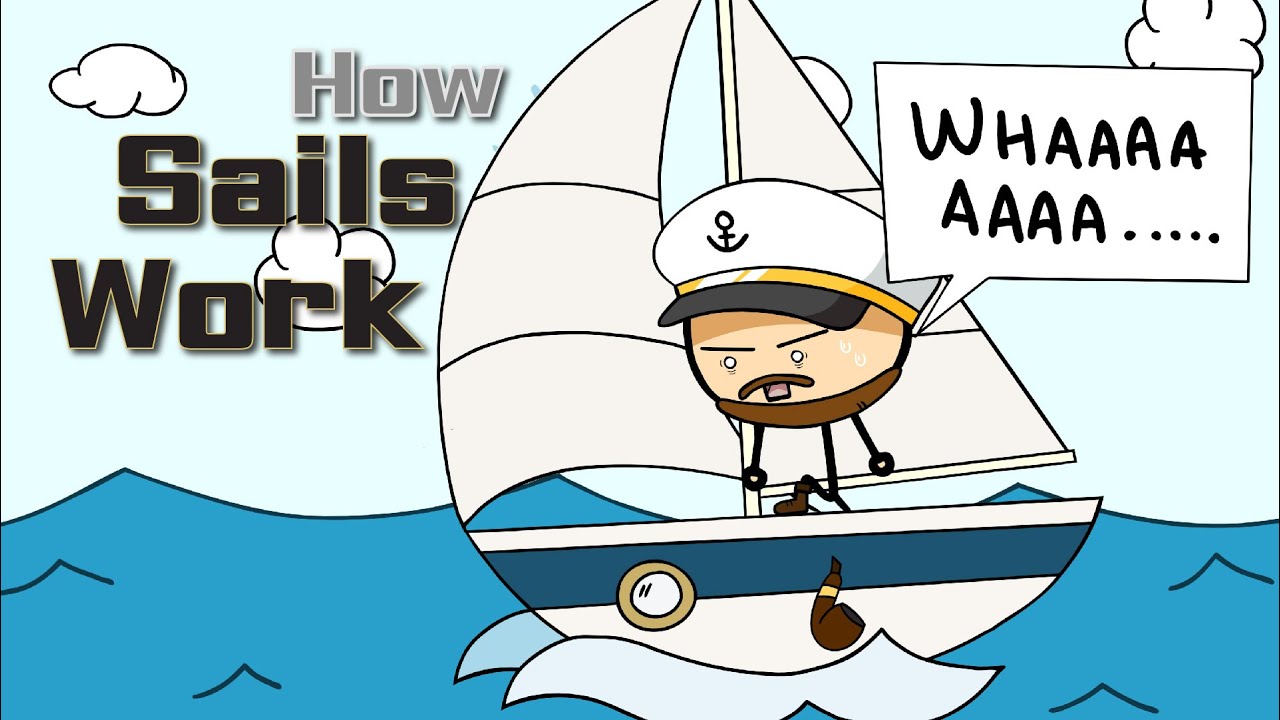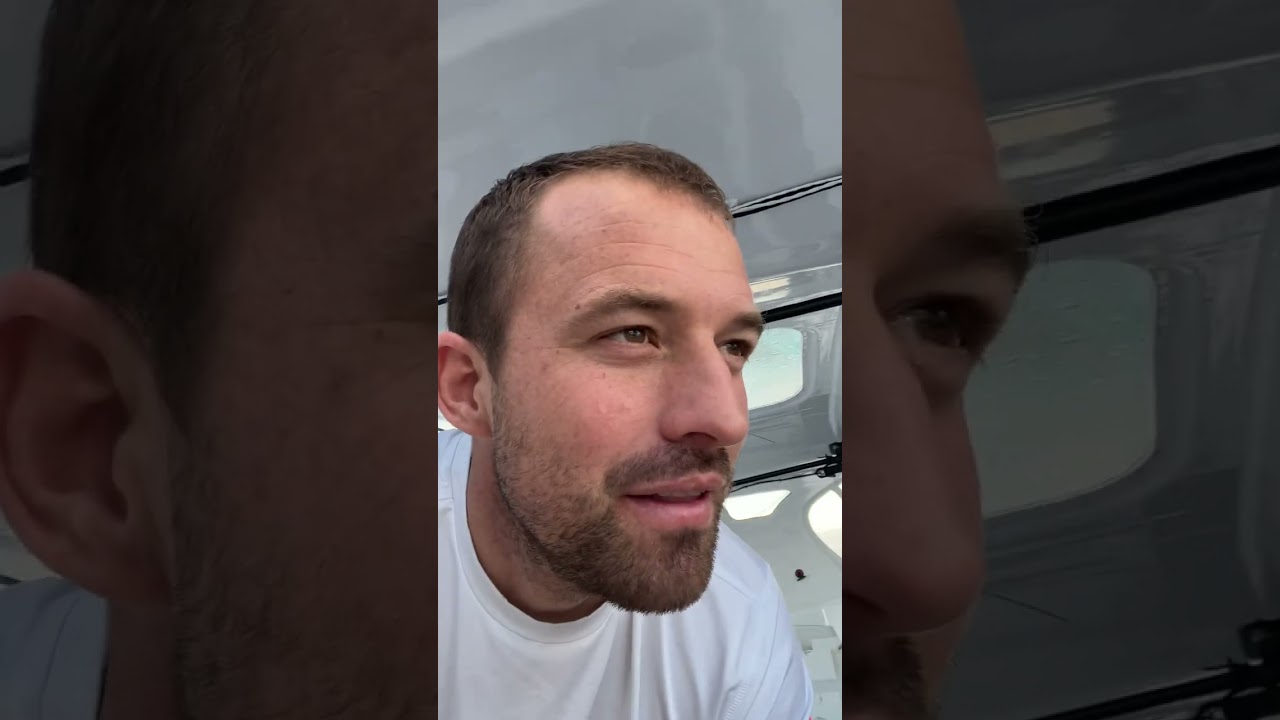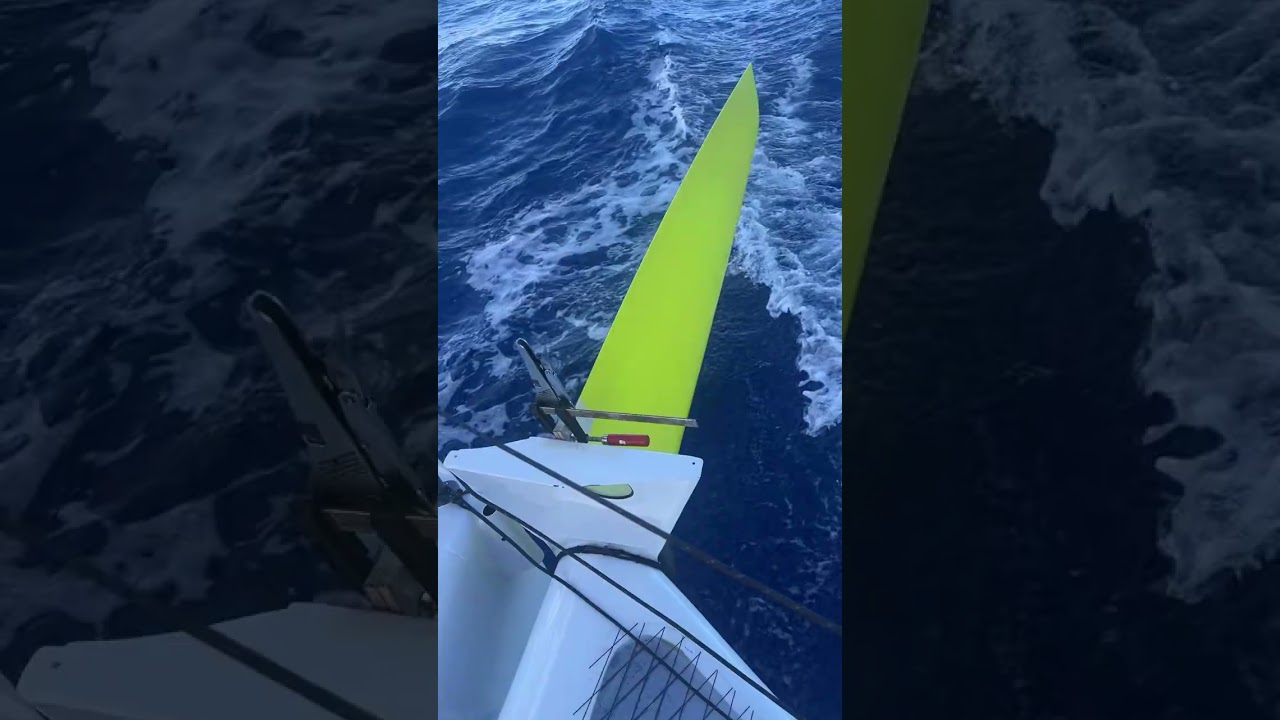Bărcile tradiționale pot naviga doar cu vântul în spate. Dar bărcile cu pânze moderne au design de vele care le permit să navigheze în orice direcție, indiferent de vânt. Cu excepția zonei de „no-go”, care este de aproximativ 45 de grade de fiecare parte a vântului, unde este fizic imposibil să se creeze portanță, indiferent de modul în care se înclină vela, caz în care marinarul poate pur și simplu să facă zig-zag în direcția în care se află. sau vrea să meargă. Secretul acestor vele este liftul. Aceeași forță care permite avioanelor să zboare în aer. De fapt, aceleași concepte se aplică, legea a 3-a a lui Newton, efectul Coanda, principiul lui Bernoulli, orice se aplică aripilor se aplică și velelor. Dar destul cu teoria navigației, dacă doriți să aflați cum se face de fapt, vedeți videoclipul lui Josh aici, Learn How to Sail: A Step-by-Step guide to SAILING: https://www.youtube.com/watch ?v=WjBYRUZbU4Y Dar înainte de a pleca, dă clic pe butonul de like și abonează-te dacă ți-a plăcut acest videoclip. 00:00 – Introducere 00:30 – Cum funcționează pânzele ca aripile unui avion 01:22 – Secret ascuns – chila 02:29 – Zona interzisă #sail #sailboat #lift #aripi #avioane #barci #airfoils Ești pe o barcă cu pânze și vântul suflă din spatele tău. Vântul va împinge pânzele și barca ta care este atașată de catarg va fi propulsată înainte. Nici un mister acolo, nu? Dar ce zici când vântul suflă spre tine sau din lateral. Ai crede că ți-ar fi imposibil să mergi mai departe, nu? Ei bine, gândește-te din nou, pentru că nu numai că vei merge înainte, dar vei îndrepta pânzele și vei putea naviga și mai repede decât vântul. Deci, cum funcționează bărcile cu pânze și navighează în vânt? Răspuns scurt, barca cu pânze este de fapt un avion pe o parte, iar vela este una dintre aripile ridicate vertical. Când navighează, marinarul va regla pânzele astfel încât vântul să fie împins pe interiorul pânzei ținând-o întins strâns, dar și într-un unghi, astfel încât o parte din vânt să treacă și de-a lungul părții exterioare a velei. Este exact ceea ce se întâmplă pe aripile unui avion. Pilotul controlează unghiul de atac, astfel încât o parte din vânt împinge aripile în sus de jos și o parte din vânt, urmând curbura părții superioare a aripii, trage aripile în sus ca urmare a efectului Coanda și a lui Newton. a 3-a lege a mișcării. Această forță rezultată se numește portanță, iar portanța este cea care face ca avioanele să zboare și bărcile cu pânze să navigheze. Totuși, spre deosebire de aripile unui avion în care direcția de ridicare este verticală, în cazul pânzelor direcția este orizontală. Dar acesta nu este sfârșitul poveștii, pentru că un observator pasionat va fi observat că direcția de susținere creată de pânze, deși orizontală, este într-un unghi față de locul în care vrem de fapt să mergem. Ne lipsește ceva aici. Ei bine, nu trebuie să privim departe, pentru că marinarilor secreti le place să numească „chila” este ascunsă chiar sub noi. Amintiți-vă că o barcă cu pânze este de fapt un avion pe partea sa. Vela este una dintre aripi și chila este cealaltă, ascunsă sub apă. Când ridicarea din pânze încearcă să miște barca într-un unghi, apa, la care vă puteți gândi la un aer mult mai dens, împinge pe o parte a chilei și trage din cealaltă parte creând portanță. În acest sens, chilele nu sunt diferite de pânze sau aripi. Totuși, spre deosebire de aripile unui avion care creează portanță în aceeași direcție, în sus, aripile unei bărci cu pânze creează portanță în direcții diferite. Ambele într-un unghi față de unde doriți să mergeți, ceea ce individual ar fi inutil, dar când efectele sunt luate împreună, rezultatul este propulsia înainte pe care o căutam. Și așa funcționează bărcile cu pânze și navighează în vânt, cu excepția zonei de „no-go”, care este de aproximativ 45 de grade de fiecare parte a vântului, unde este fizic imposibil să creezi portanță, indiferent de înclinarea velei. Evident că ai nevoie de magie pentru asta. Ceea ce nu este magie este efectul Coanda și modul în care funcționează aripile folosind a treia lege a mișcării a lui Newton. Puteți afla mai multe despre el aici în partea 1 a modului în care funcționează aripile. Sau dacă sunteți mai degrabă un tip de persoană principală a lui Bernoulli, vedeți partea 2 despre cum funcționează aripile, aici.
source
Cum funcționează pânzele sau cum navighează bărcile cu pânze în vânt

20 thoughts on “Cum funcționează pânzele sau cum navighează bărcile cu pânze în vânt”
Comments are closed.




I may be more confused than when I started… I could understand the airplane wing in my little guy years, this still escapes me. I might have to get out on a boat to try to understand this.
I will watch this again, I can tell it's a very good video. Thank you!
Wow, great video.
I never imagined any similarities between sailboats and planes. This was phenomenally explained and illustrated.
Still don't get it 🙁 but this sounds like a great explanation
The fact that the sail of a sailboat is essentially an airplane wing was a huge revelation for me! One small correction though, the Coanda effect doesn't pull the wing upwards at all. The Coanda effect describes how powered jet flows will stay attached to a convex surface, whereas the flow over a sail stays attached due to its viscosity forming an attached boundary layer (much like how water will stay attached to the edge of a cup if you pour it out slowly)
GREAT STUFF
What a clear explanation!!
Thank you.
the wind never came dead on?
I just started my physics college class, and someone had posted this video to help better understand how sailboats move. Your video was not only informative but cute as well! I loved it!! I'll need to watch your other videos now!
This was very interesting and well explained
Just took my first sailing lesson yesterday and couldn't deduce the relationship of the angles of wind to sail to keel (rudder in my case). This was the analogy I wish I'd seen in their intro part of the lesson. I need to fwd this to that instructor and i give you my compliments.
What do you mean 45 degrees on either side of the wind, about the no-go zone? Does it refer to the fact that the wind passes along both sides of the sail, or am I reading this wrong?
I don't understand either 😆
With all due respect, there is a scientific error in the explanation of the keel and rudder part, as per the end of the text immediately below.
.
The starting point to understand how it is possible for a sailboat to sail against the wind is to understand how an airplane sustains itself (by Bernoulli's Principle and by action and reaction) and how an F1 "sticks" to the ground (essentially by action and reaction, and not by Bernoulli).
.
When an airplane is cruising and flying completely horizontal, it is lifted almost exclusively by Bernoulli: the difference in geometry at the top and bottom of the wings creates lift. This force is perpendicular to the motion of the plane, and drag (drag, or air resistance) is minimal.
.
As a curiosity, the aerodynamic drag of an Airbus A380 in cruise, for example, is 0.0265 (against 0.001 of a laminar fluid on a plate, and 0.005 of a turbulent fluid on a plate); even so, it consumes a huge amount of fuel, something like an average of 5 liters per second in a flight.
.
An airplane can also fly based on action and reaction; the most obvious example is that of a paper airplane, whose wings are straight and could not be supported by Bernoulli. In its flight, however, its beak must be slightly tilted upwards, so that the air enters underneath and sustains it. The main characteristic of a flight by action and reaction is the high drag: a study with two types of paper airplanes showed that they have a drag coefficient between 0.8 ("Stunt Plane") and 1 (" The Glider").
.
Note that even an airplane like the A380 will face enormous drag both in the climb and in the descent, due to the air that enters either below or above and will tend to brake it.
.
Another situation in which there will be enormous fuel consumption is if it were to fly upside down: in this case it would be like a paper airplane, and its beak, in order to sustain itself, must be kept slightly tilted upwards. . To close this part, an F1 car "sticks" to the ground due to the forces generated by the wings (two front and one rear), which are basically inverted wedges: the airfoils of an F1 do not work like an inverted wing of an airplane ( they perhaps more closely resemble the elevators of this one). They are just wedges in which the natural downforce is generated at the cost of drag (this is sometimes positive, because it helps the car to brake. It can contribute up to 1g of braking), that is, based exclusively on the principle of action and reaction. .
As a consequence, the drag coefficient of an F1 is very high, reaching values as high as 1.1! A driver once commented that driving an F1 is like trying to accelerate a car with an open parachute behind it. . .
Having made this introduction, it became much easier to understand how a sailboat sails against the wind. That experiment where you blow on the side of a sheet of paper and it rises, almost like magic, is a clear demonstration of Bernoulli's Principle! Due to the greater air velocity in the upper part of the paper, there is a lower pressure (to understand, imagine a hose connected to a faucet, and this one is open: with the faucet open, but the nozzle of the hose locked, the force against the walls is huge, but when we unlock the nozzle and the water acquires enormous speed it may be that, even with a hole in the hose, it does not leak through it, but continues to flow), and with that the leaf rises!
.
Note that blowing in one direction generated a lift force, in a perpendicular direction, which is amazing!
.
Returning to the sailboat, it cannot face the wind head-on and walk against it in this situation, but it can be placed on its side, in such a position that the wind generates lift in the sails from the difference in inclination of its material (the sail is with a more rounded side, like an airplane wing); note that one of the components of lift is in the opposite direction to the force of the winds (and will obviously have a much lower intensity than this one) and the other in a perpendicular direction to this one (also lower intensity).
The tendency is for the sailboat to walk inclined in the direction of the wind (for example, either northwest or northeast, if we are talking about a north-south wind), that is, going sideways.
.
And here comes the mistake.
.
In a common boat, not a sailboat, the rudder is largely responsible for steering it (the helm changes the position of the rudder). On a sailboat, it also serves to counterbalance the force to one side generated by the sails, but this does not occur as an "inverted lift", or the same lift in the perpendicular but to the other side; in other words, they say that the Bernoulli Principle is at work there, when it is not. What happens inside the water is just action and reaction (that is, something more similar to the wings of an F1, and not to those of a cruising plane): if the boat tends, for example, to the northeast, just turn the rudder to the left, so that the course is corrected, so that the sailboat has the final tendency to walk into the wind. . As we are not talking about an active force, that is, in the end, it is the wind that is setting the tone (note: I am ignoring possible sea currents and proximity to surf zones), the tendency is that, even with the rudder positioned in such a way as to counterbalance the force of the sail in the opposite direction, it will still be displaced in an inclined manner, either to the northwest or to the northeast (in the case of a north-south wind), however the solution is simple: after a while, just invert the position the sails, as well as the rudder, so that the vessel zigzags around the main straight path into the wind.
This is so easy to understand especially since every one else has to make a 20 minute video about it and it’s so hard to understand so this guy is and his channel has the best most simple illustration
Wouldn't square sails work differently?
That is the best and simplest way of explaining how sailing boats work that I've seen. Brilliant. Thanks!
wow, this is so easy to understand!!
Exemplary
So the sails on a sailboat was invented based after the invention of the wings of an airplane? 🤨😏
I always hate the comparison to the "simple" plane wing physics. Because it isnt simple at all. Lift is very counterintuitive and we actually don't fully understand how it works when it comes to rounded wings. Like we dont understand it as a human race yet lol. But yes the basics are simple if you dont think too hard about what is actually happening